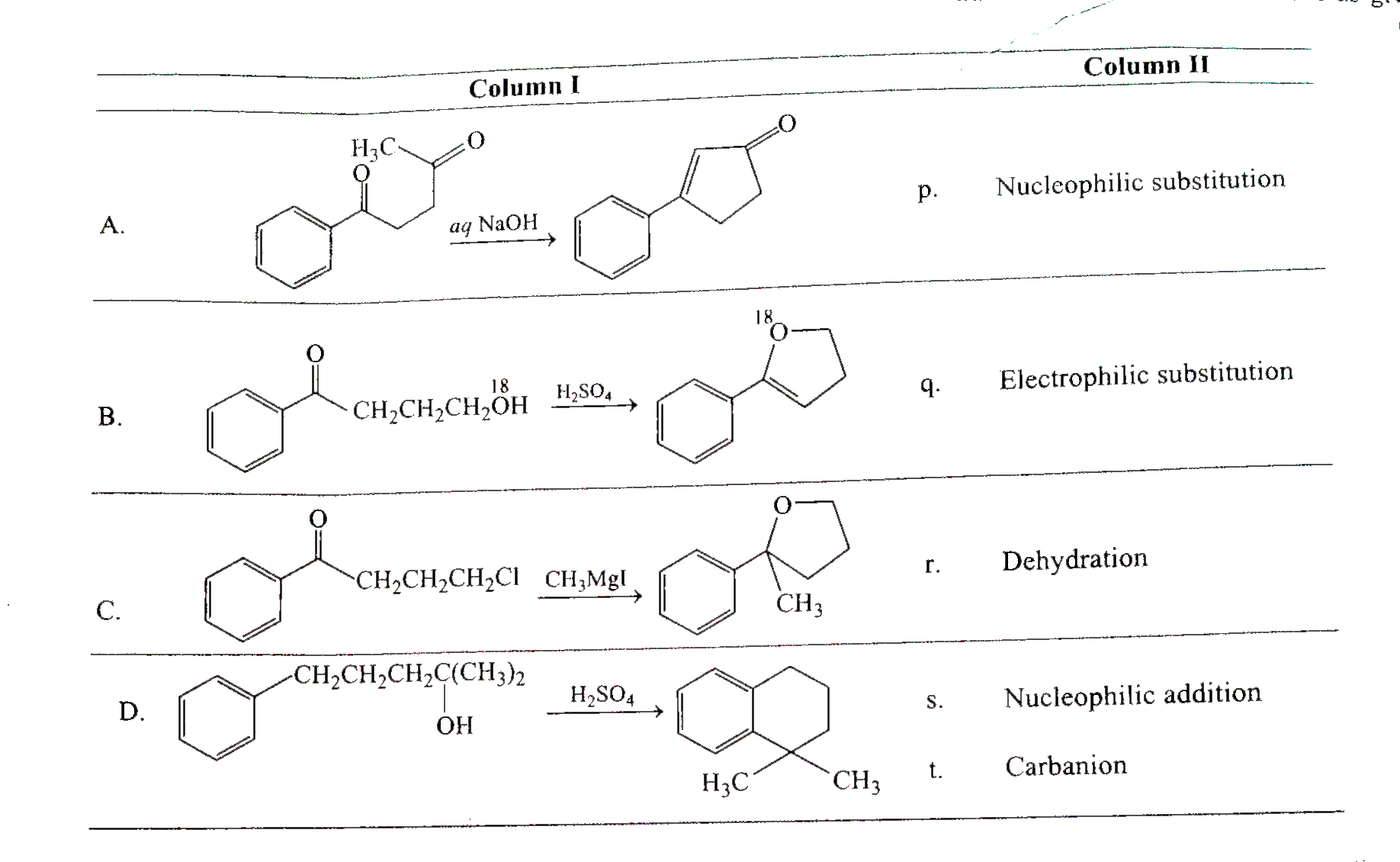Reaction intermediate of EicB reaction is :
carbocation
Carbanion
Carbene
carbon radical
The correct Answer is:2
To determine the reaction intermediate of the E1CB reaction, we will analyze the mechanism step by step.
1. Understanding E1CB Reaction:
- The E1CB reaction stands for unimolecular elimination via the conjugate base. This type of reaction occurs when the beta hydrogen is acidic, allowing for the formation of a stable conjugate base.
2. Identifying the Structure:
- Consider a compound with the structure: CH3C(=O)CH2CH2X, where X is the leaving group. The beta hydrogen is the hydrogen attached to the beta carbon (the carbon adjacent to the carbon bearing the leaving group).
3. Base Attack:
- A base will attack the acidic beta hydrogen. This results in the removal of the beta hydrogen and the formation of a carbanion (a negatively charged carbon species).
4. Formation of the Intermediate:
- After the base removes the beta hydrogen, the bond between the beta carbon and the beta hydrogen shifts to form a carbanion. The intermediate formed is:
CH3C(=O)CH−CH2X
- Here, the carbanion (CH^-) is the key intermediate in the E1CB mechanism.
5. Final Steps:
- The carbanion can then undergo a fast elimination step where the leaving group (X) departs, leading to the formation of an alkene:
CH3C(=O)CH=CH2+X−
Conclusion:
The reaction intermediate of the E1CB reaction is a carbanion.
- The E1CB reaction stands for unimolecular elimination via the conjugate base. This type of reaction occurs when the beta hydrogen is acidic, allowing for the formation of a stable conjugate base.
- Consider a compound with the structure: CH3C(=O)CH2CH2X, where X is the leaving group. The beta hydrogen is the hydrogen attached to the beta carbon (the carbon adjacent to the carbon bearing the leaving group).
- A base will attack the acidic beta hydrogen. This results in the removal of the beta hydrogen and the formation of a carbanion (a negatively charged carbon species).
- After the base removes the beta hydrogen, the bond between the beta carbon and the beta hydrogen shifts to form a carbanion. The intermediate formed is:
CH3C(=O)CH−CH2X
- Here, the carbanion (CH^-) is the key intermediate in the E1CB mechanism.
- The carbanion can then undergo a fast elimination step where the leaving group (X) departs, leading to the formation of an alkene:
CH3C(=O)CH=CH2+X−
The reaction intermediate of the E1CB reaction is a carbanion.
Topper's Solved these Questions
- BOOK - RESONANCE ENGLISHCHAPTER - FUNDAMENTAL CONCEPTEXERCISE - Inorganic chemistry (Chemistry Bonding)6videos
FUNDAMENTAL CONCEPT
- BOOK - RESONANCE ENGLISHCHAPTER - FUNDAMENTAL CONCEPTEXERCISE - ORGANIC CHEMISTRY(Fundamental Concept )40videos
FUNDAMENTAL CONCEPT
- BOOK - RESONANCE ENGLISHCHAPTER - EQUIVALENT CONCEPT & TITRATIONSEXERCISE - Part -IV22videos
EQUIVALENT CONCEPT & TITRATIONS
- BOOK - RESONANCE ENGLISHCHAPTER - GASEOUS STATEEXERCISE - Exercise-31videos
GASEOUS STATE
Similar Questions
Knowledge Check
- Question 1 - Select One
H3C−CH=CH2+HclPeroxide−−−−→Product,
the intermediate of reaction is :A B
B CCH3−⊕CH−CH3DCH3−CH2−⊕CH2
CCH3−⊕CH−CH3DCH3−CH2−⊕CH2 - Question 2 - Select One
The reaction in terms of intermediates and type of reaction is given below. Mark the incorrect option.
ACH3−CH3∣C=CH2+HBr→ Carbocation intermediateBCH3−CH3∣C=CH2+HBrperoxide−−−−→Free radical intermediateC D
D
Reaction intermediate formed in the formation of salicylaldehyde from phenol (Reimer-Tiemann reaction) is
View SolutionWhat is the reaction intermediate in a nitration process ?
View SolutionIntermediate formed during E2 reaction is -
View SolutionIntermediate formed during E2 reaction is -
View SolutionConsider the following reaction
 The reactive intermediate invovled in this reaction is View Solution
The reactive intermediate invovled in this reaction is View SolutionMatch the reactions in Column I with appropriate types of steps/reactive intermediate involved in these reactions as given in Column II.
 View Solution
View Solution

